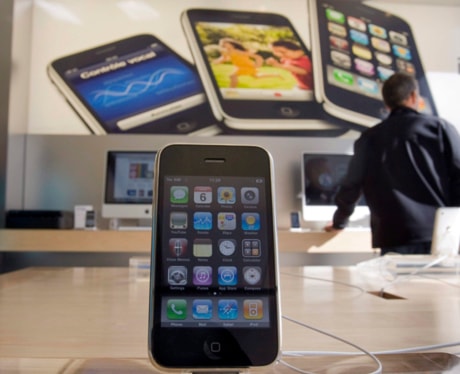MONTREAL — Watching video, sharing high-resolution photos and sending emails with big attachments all take up a lot of bandwidth and wireless carriers are making their networks even faster to meet the demand from smartphone and mobile laptop users.
These upgraded, fourth-generation networks mean new smartphones and new devices used by laptops to connect to the Internet are coming into the Canadian market that will allow quicker surfing and be more powerful.
Bell (TSX:BCE) and Telus (TSX:T) have already upgraded their new networks, not even two years old, to faster 4G technology while Videotron (TSX:QBR.B), MTS (TSX:MBT) and SaskTel have all said they are on the same path.
Rory Altman of the consulting group Altman Vilandrie & Company said it’s not just a marketing advantage.
“For the first guy who did it, it’s a competitive advantage and for every other player, it’s not being left behind in the craze,” he said from Boston.
“They’re doing it to support user demand.”
There have been technical arguments about whether these networks are truly 4G and international standards have been relaxed recently to allow carriers to say they are operating such networks once they enhance their advanced networks.
In the U.S., T-Mobile started the debate by calling its new network 4G, with AT&T and Verizon, joining the debate.
Altman said carriers are “fibbing a little bit” about having 4G networks already, but noted they are faster for streaming video, loading graphics and opening big email files.
“If you want all that to happen right now when you start using your device, then you’re going to need a faster network,” said Altman a director and co-founder of the consulting firm.
“Because there are a dozen or a hundred or 300 other people that are in your vicinity trying to do the exactly thing at exactly the same time.”
Rogers (TSX:RCI.B) said it also has 4G network speed, but it said it isn’t getting involved in the name change and is committed to Long-Term Evolution network technology, what it considers the “gold standard” of 4G networks.
“There’s no question, LTE is the future and we’re leading by bringing this superior technology to Canada and to Canadians,” said Bob Berner, Roger’s chief technology officer.
LTE is expected to give mobile users an even faster experience, about the equivalent of a home Internet connection.
Bell and Telus are also testing LTE technology, while carriers such as Wind Mobile say they are on the path to an LTE network.
“Per user, the bandwidth consumption is exploding as mobile apps really start to take hold,” said Anthony Lacavera, chairman of Wind’s parent company Globalive.
“Things like Google maps obviously use a ton more data than just email did a couple of years ago.”
Technology analyst Duncan Stewart said a number of 4G devices should be in Canada by this fall, but initially there will be more Internet modems than smartphones.
Stewart said it’s not surprising that carriers are playing up the network enhancements they’ve made.
“All of this stuff about ’faux’ G and it’s not the real 4G, all of that stuff is really marketing,” said Stewart, director of Deloitte Canada Research in technology, media and telecommunications.
“But if you want to browse the web and look at pictures and especially look at videos you need higher speeds.”
